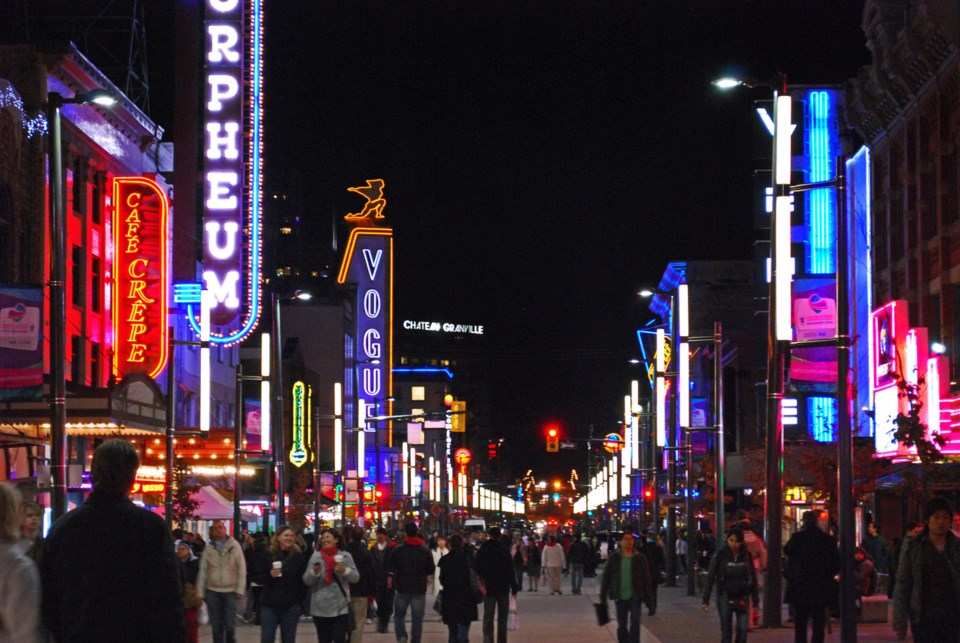If you were walking the dim streets of Vancouver back in the 1950's, you wouldn't have been able to walk a block without seeing a neon sign or two.
This city was home to 19,000 neon signs—one for every 18 people in Vancouver at the time and second only to Las Vegas.
This neon glory is now a mere glimmer of Vancouver's bright past ever since the city laid down the law against neon 'distractions' in the '70s.
The signs themselves have faded in popularity over the years, but this doesn't mean that every sign has disappeared.
Have a look at the historic past of some of Vancouver's last standing neon signs that have a legendary place in our city's present.
Smilin' Buddha Cabaret
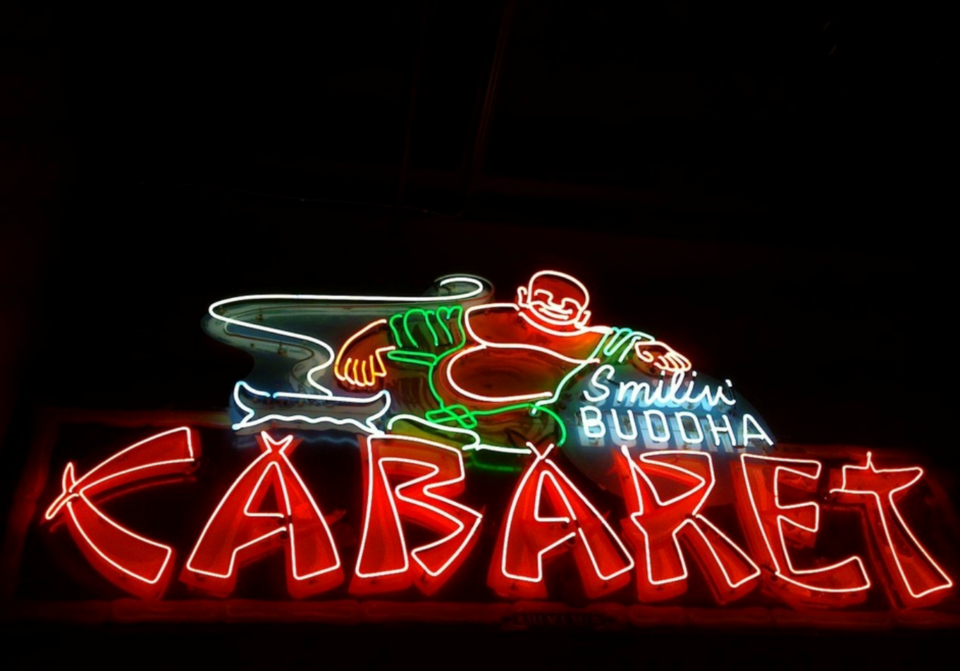
The Smilin' Buddha Cabaret was a legendary symbol of Vancouver's entertainment scene for many years.
The venue was a physical embodiment of post-war success and was iconic on Hastings Street—so much so that it (and the sign) attracted major music acts like Jimi Hendrix. Well into the '70s, when new genres became popular, the Smilin' Buddha Cabaret remained a hub for live music events until 1992.
When the club closed, the sign was purchased and restored by the band 54-40. This special Vancouver sign now lives at the Museum of Vancouver and the original building now houses a secret indoor skate park and ever-changing murals on the exterior.
Lonsdale Quay 'Q'
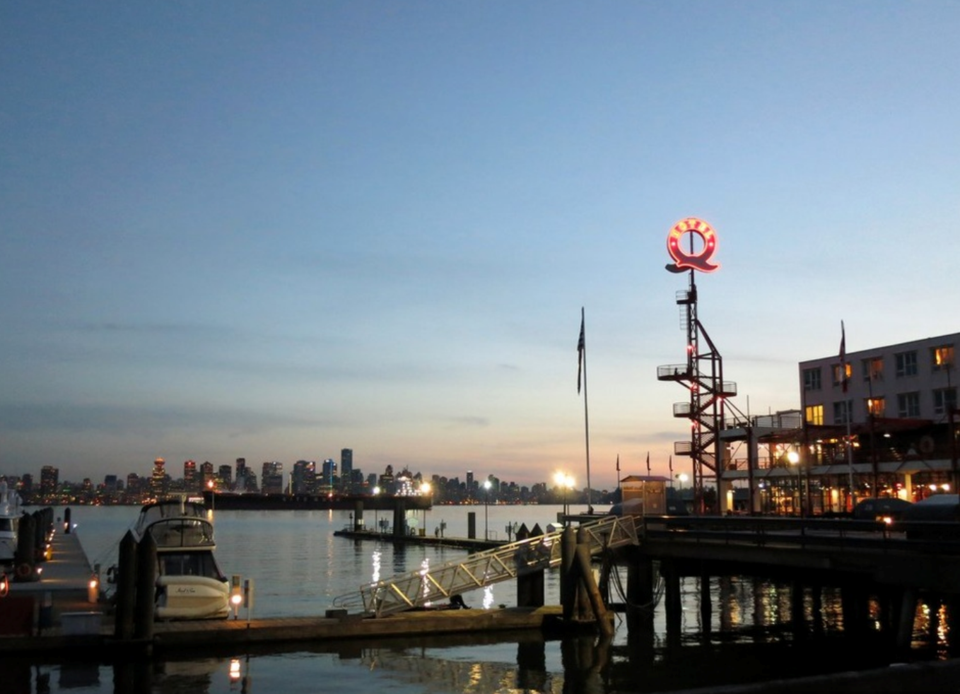
If you're arriving to North Van from the city centre by SeaBus, this massive rotating 'Q' is certainly hard to miss.
The Lonsdale Quay Market opened in 1986 for the World Expo. Today, the Quay is used for many different food and retail purposes but its 'Q' represents a community hub and anchor in the Lower Lonsdale area. Climb to the top of the 'Q' to capture one of the best unobstructed views of Vancouver's skyline—Instagrams encouraged but not required.
The East Van Cross
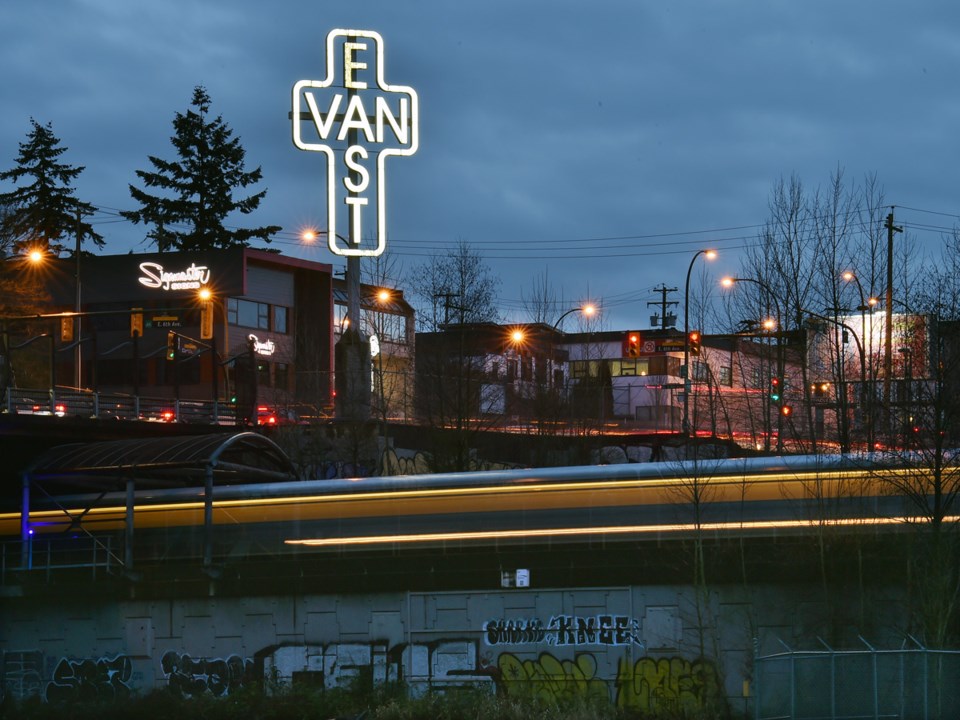
It appears on your Instagram feed all the time but you probably don't know the story behind the East Van cross, a modern day "neon" sign (it's actually LED, we know).
Shining brightly from Clark Drive, this neon monument (though now somewhat cheeky) is believed to have been a symbol for the large Catholic population in the surrounding area in the 1950s.
Though it started with pure origins, rebellious teens in the area adopted the symbol as their own, tagging it on walls and showcasing it on their clothing. Since then, it's become a symbol of East Van as a neighbourhood and burgeoning cultural hub. Artist Ken Lum noted its cultural significance and designed this art installation to tower over the 'hood.
Helen's Children's Wear
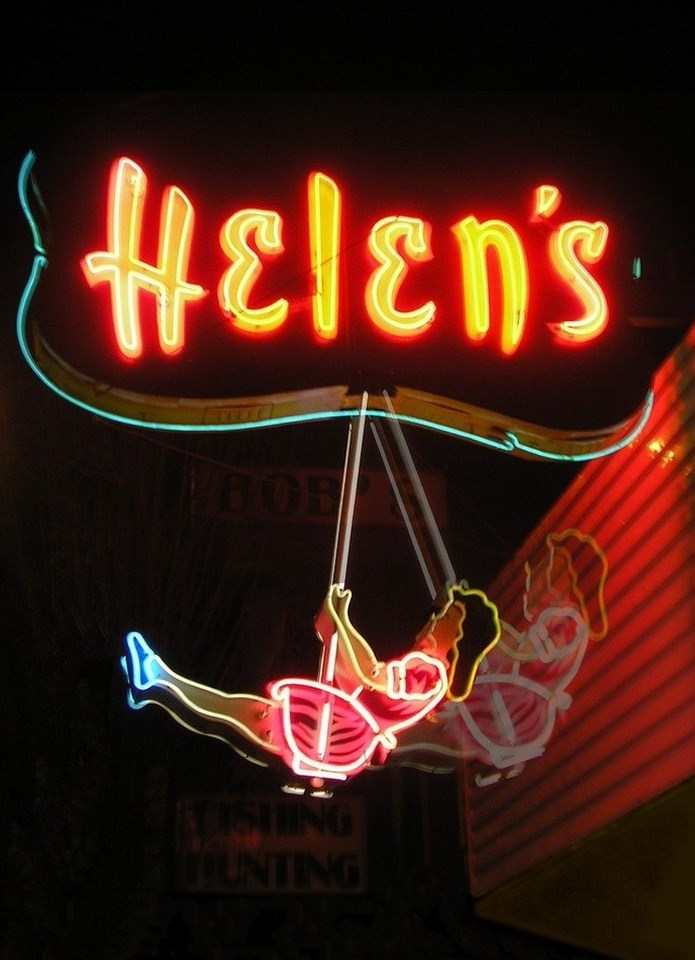
If you walk or drive through North Burnaby along East Hastings Street at night, you'll eventually run into one of Vancouver's most iconic neon signs.
This bright neon monument survived the 1970's crackdown on neon signs and acted as a beautifully bright advertisement for Helen's Children's Wear until 2006 when the store closed.
Considered a heritage landmark, this sign has stood the test of time, though the city changed the word 'Helen's' to 'Height's' to represent the name of the neighbourhood today. Keep swingin'!
Vogue Theatre
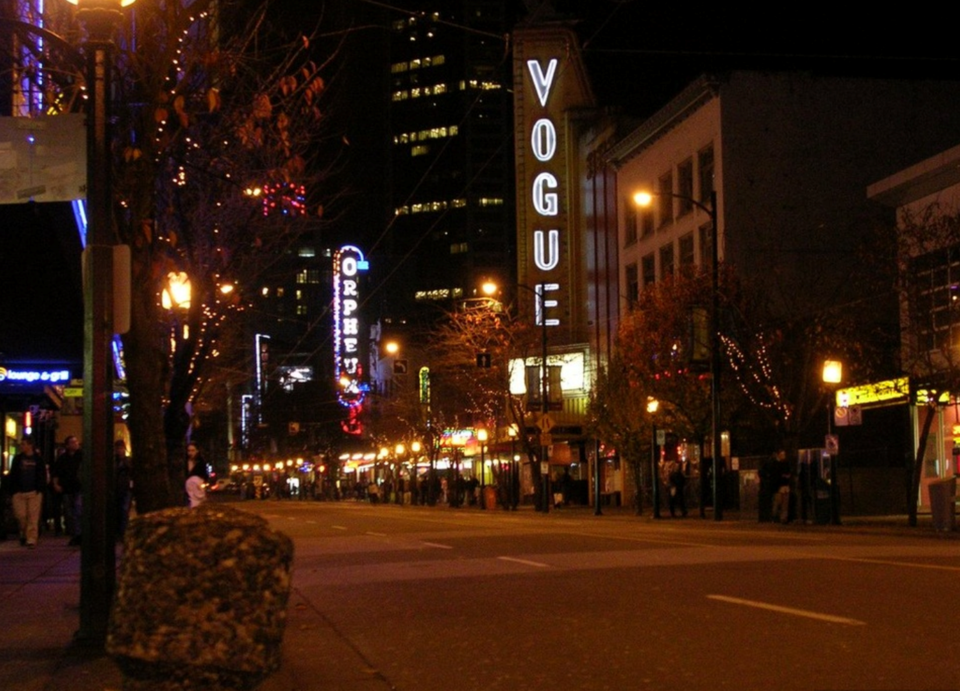
The Granville Strip still boasts several neon signs with one of the most notable being the 62 metre-high beauty outside the Vogue Theatre.
The neon sign featured on this Art Deco theatre that opened in 1941 is topped by a 12-foot figure of the Roman goddess Diana.
Though components of this sign have changed over time—from the Diana figure to the colour of the lights—the sign has now returned to its roots and once again features red and yellow neon.
The Sylvia Hotel
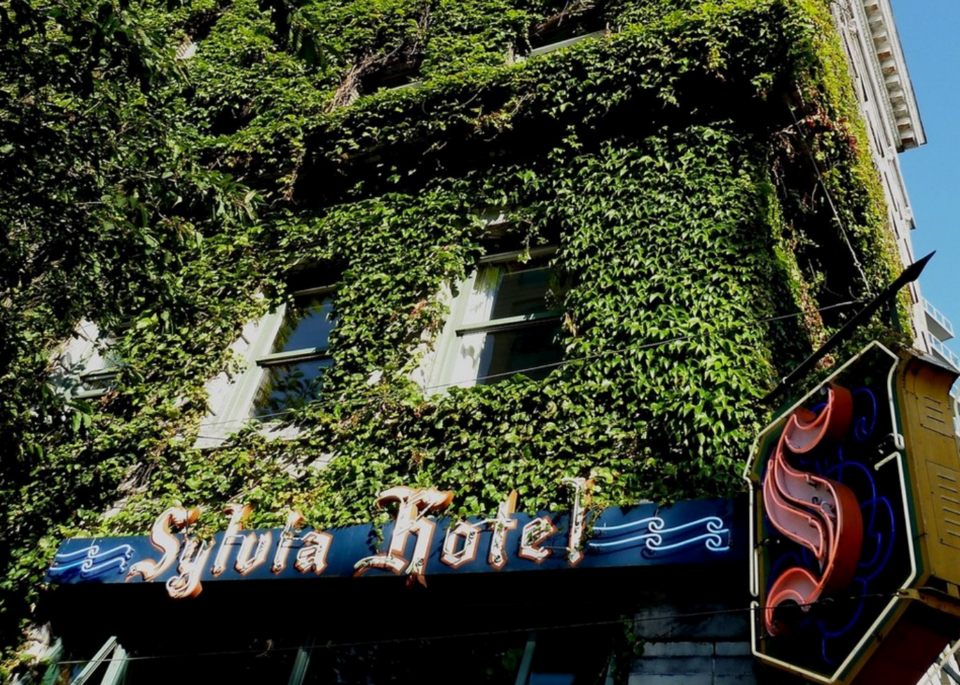
The iconic 'S' of the Sylvia Hotel is a symbol of its dynamic past.
Now a hotel, this seaside landmark opened in 1913 as an upscale 77-unit apartment building nestled in a quiet neighbourhood while still being close enough to the happenings of downtown.
The hotel and the English Bay area have transformed over the years, but luckily the notable sign out front has remained intact.
Dayton Boots
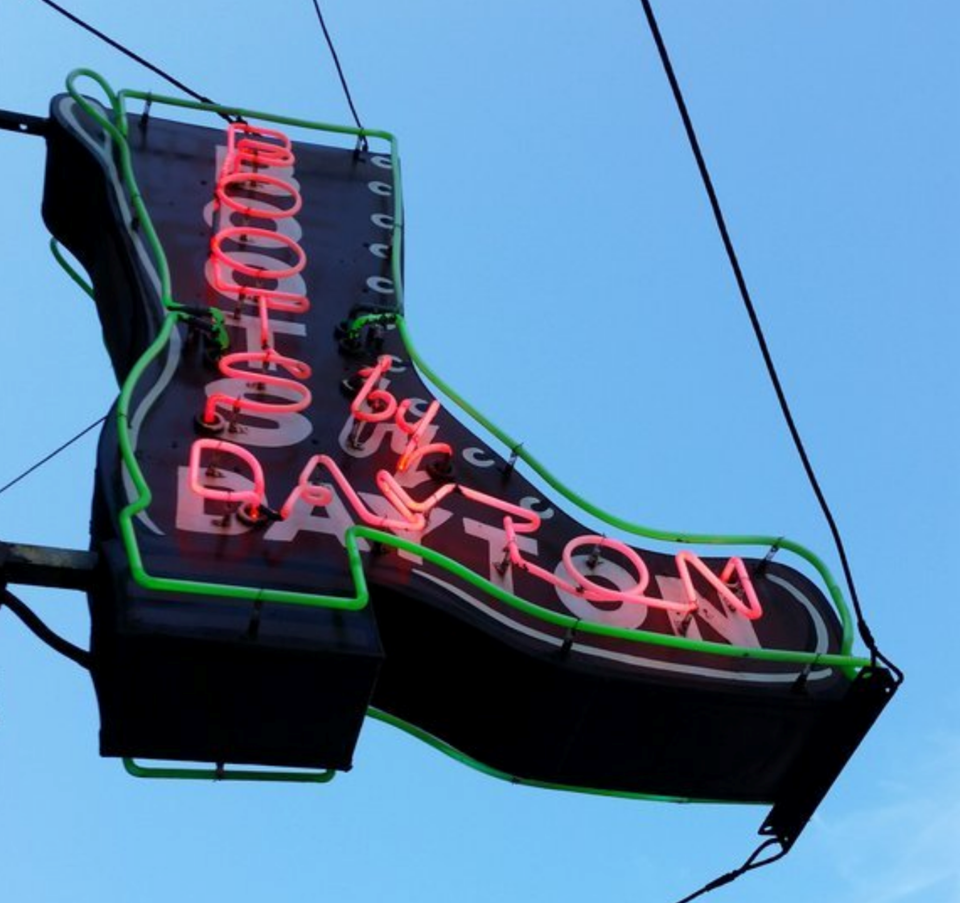
It all started in the 1940's Charlie Wohlford, who worked at the Lumberman's Social Club, noticed many of the loggers who frequented the place were having difficulty getting their boots repaired.
He did such a great job that his newfound friends urged him to make and sell his own brand of boots. Following their advice, he started making 'Daytons,' named as such mostly because 'Dayton' was easier to pronounce than 'Wohlford'.
He constructed a bright neon sign outside to advertise his boots and 68 years later, the sign still stands as a tribute to his legacy.
The Orpheum
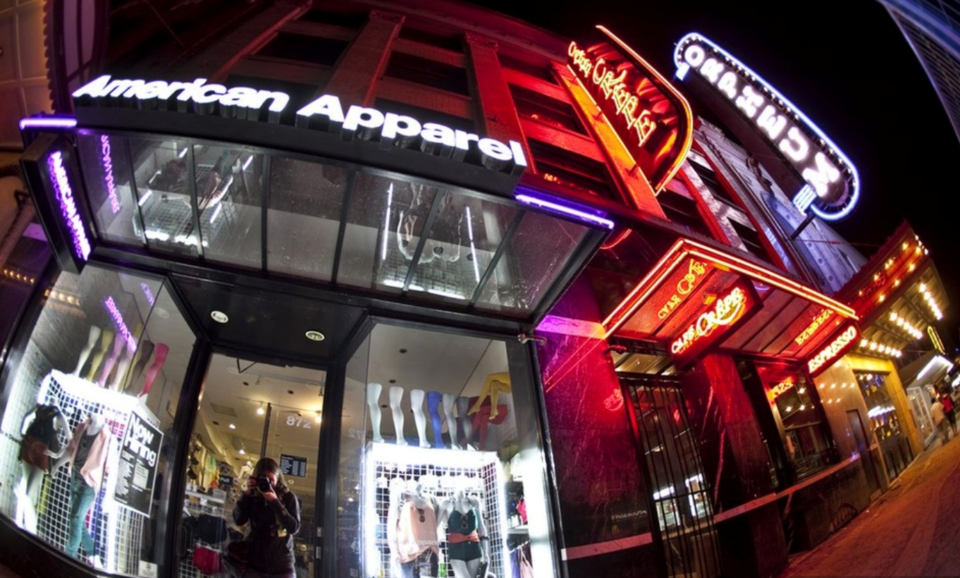
The Orpheum was originally built in 1927 as a part of a movie chain called the Orpheum Circuit during the Vaudeville age and was a massive undertaking with over 3,000 seats and costing over $1 million to build.
The lightbulb sign originally read 'New Orpheum' until it was replaced in the '40s with a neon version reading 'Orpheum'.
Still lit up today, this sign marks the resilience of this cultural space which has shifted from Vaudeville to movies to concerts.
The Woodward's W
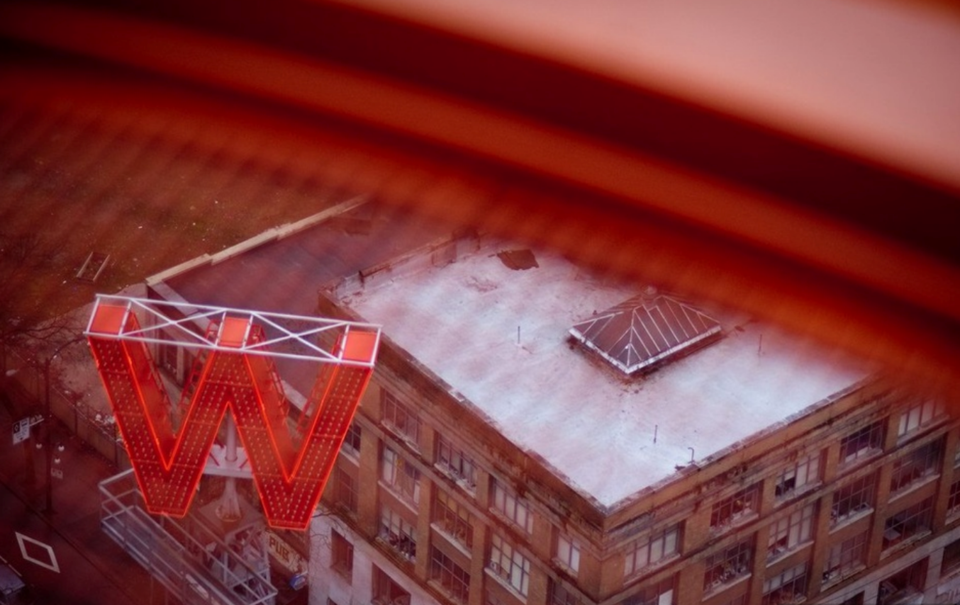
Marking the Woodward's building, the neon 'W' we see in Gastown today isn't the original.
Instead, this replica was raised to the top of a mini Eiffel Tower in 2010 when the historic block re-opened as a multi-use space.
Originally opening in 1891, Woodward's was a bustling department store and this 'W' acted as a marker for Vancouverites to flock to for the famous Food Floor and awesome deals.
Now, the original 'W' sits in the the courtyard near The Charles Bar on West Cordova Street.
